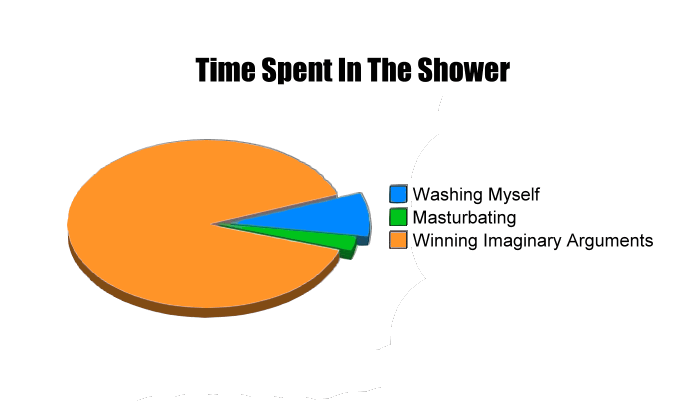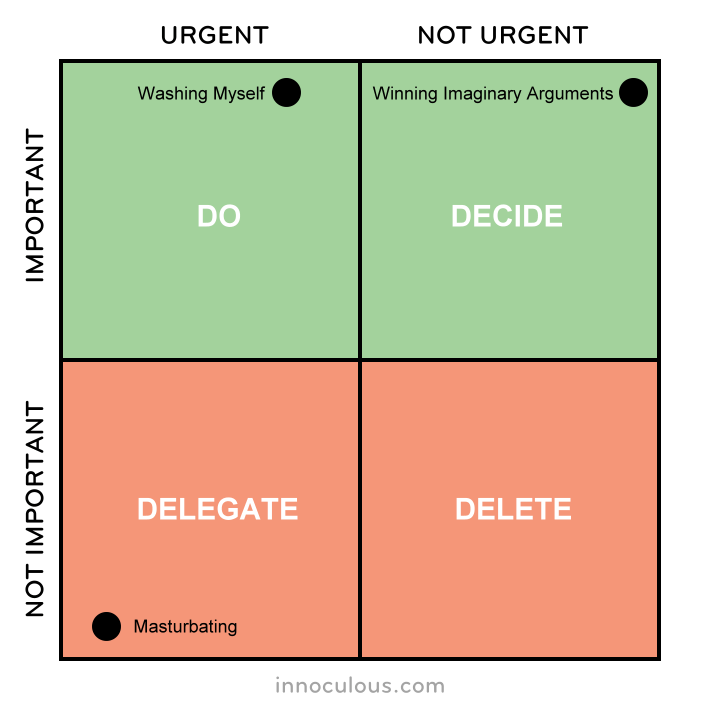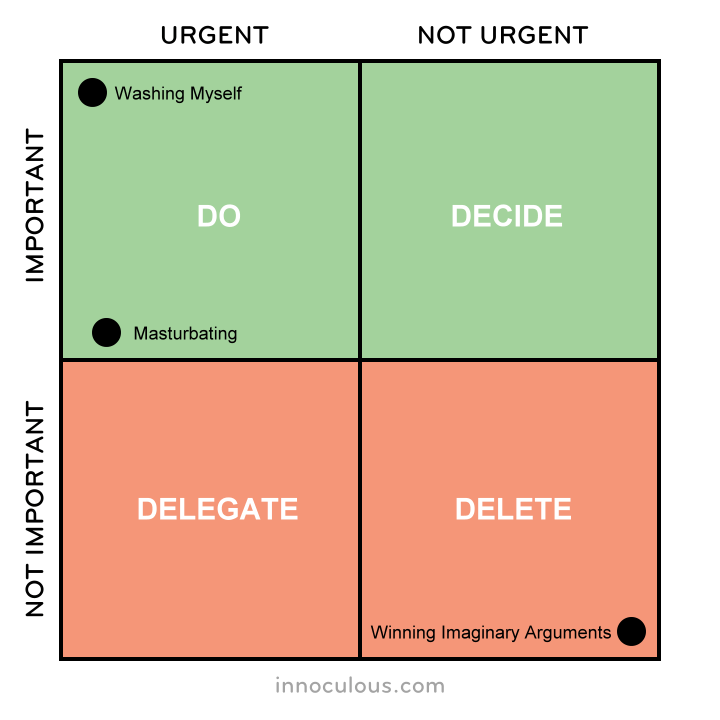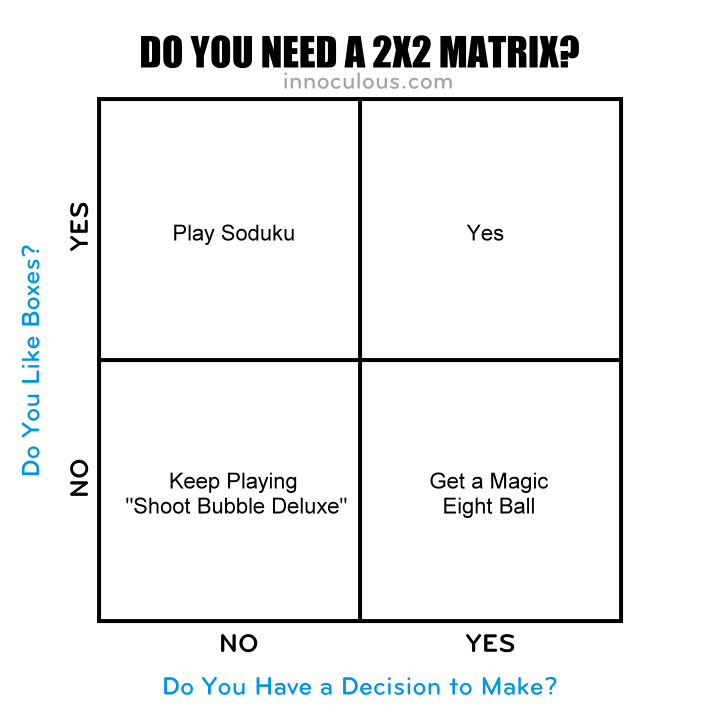For this week’s Monday Metavator, we’re going to look at time management. We’ll be digging right in, but before you get to work on a new time management scheme, it’s probably a good idea to assess where your time currently goes. As we performed some granular analysis, closely scrutinizing even the most trivial or mundane activities of a typical day in the life of our subject (a random volunteer of course, not the author), the subject (who was not the author) was surprised at where some of their time was really going:
 Getting Started: The 2×2 “Eisenhower Matrix”
Getting Started: The 2×2 “Eisenhower Matrix”
One of the simplest tools available for prioritizing tasks and time was popularized in the 1990’s by the book First Things First, authored by Stephen Covey (probably best known for his title The 7 Habits of Highly Effective People). It was borrowed from the simple method utilized by Dwight D. Eisenhower, which is often referred to as the Eisenhower Method or “Eisenhower Matrix”. In its basic form, it’s brilliant, and simple to use. Place all your activities on a simple two-axis (urgency/importance), two-state (positive/negative) grid, and you can sort priorities with incredible ease and effectiveness. Let’s try this, using the data from the first chart, and placing it according to urgency vs. importance. Washing oneself on a Monday is probably both urgent and fairly important, while “winning imaginary arguments” – while it may seem important on a subjective level – probably isn’t urgent at all:

As you can see, we’ve already run into a slight problem. How can we possibly delegate the task in the lower left? Although you may be able to think up some creative answers to that question, the simple fact is that the subject (who, as we’ve stated, was not the author) was probably being less-than-honest with themselves about the importance of the task, because they knew you were reading this. They tried to hide this fact with the obvious smokescreen of putting the “winning imaginary arguments” item in the upper right, as if this feigned admission of the character weakness of thinking this was important would throw us off the trail of what was going on in the lower left quadrant. Let’s try again, but demanding the utmost honesty and consistency from the subject:

This makes things a bit simpler. The subject’s admission that the “masturbation” item was more important to them than first stated makes it clear that although it may still seem urgent, it might at least be deferred, due to a lack of importance. It also makes it clear that “winning imaginary arguments” could be terminated altogether. Although it’s hard to imagine what else one would do in the shower, now that the work load has otherwise been lightened so much.
2×2 Matrix Abuse
As with all things in the corporate, finance-bubble-driven world we increasingly live in, this simple, useful tool inevitably gets abused in PowerPoint presentations. Let’s see how. We grabbed this from a random LinkedIn Slideshare:

So what’s wrong with the 2×2 above? Oh puh-LEEZE. What ISN’T wrong with it? Aside from the fact that it abandons all sense of meaningful content, direction, and reference to its two simple axes, it’s literally bursting with corporate mumbo jumbo like “move the needle by leveraging client-focused interactions in the innovation pipeline”. Plus it has a typo right at the top. Let’s see if we can fix it.
2×2 Matrix Abuse, Corrected

See how easy this is? Now let’s recap, with a pie chart of how our time this morning has been spent, versus how it SHOULD have been spent:

Do You Need A 2×2 Matrix At All?
Probably not. But they’re great for distracting everybody from your missed deadlines if you create a really confusing one on the whiteboard while you talk. To help you determine if you really need one or not, we’ve created this handy matrix:





